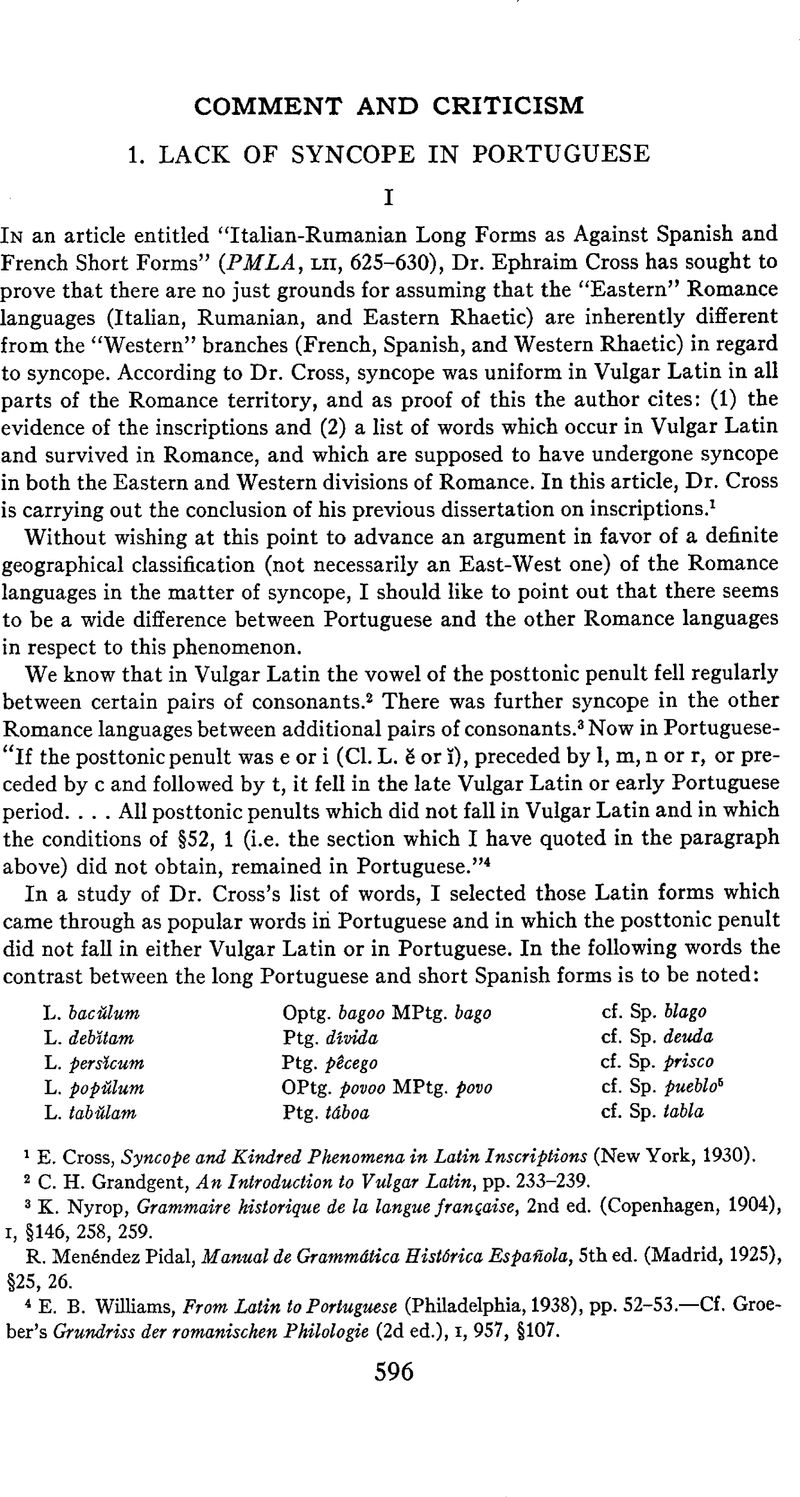No CrossRef data available.
Article contents
Lack of Syncope in Portuguese
Published online by Cambridge University Press: 02 December 2020
Abstract
An abstract is not available for this content so a preview has been provided. Please use the Get access link above for information on how to access this content.

Information
- Type
- Comment and Criticism
- Information
- Copyright
- Copyright © Modern Language Association of America, 1940
References
1 E. Cross, Syncope and Kindred Phenomena in Latin Inscriptions (New York, 1930).
2 C. H. Grandgent, An Introduction to Vulgar Latin, pp. 233–239.
3 K. Nyrop, Grammaire historique de la langue française, 2nd ed. (Copenhagen, 1904), i, §146, 258, 259.
R. Menéndez Pidal, Manual de Grammâlica Histórica Española, 5th ed. (Madrid, 1925), §25, 26.
4 E. B. Wilhams, From Latin to Portuguese (Philadelphia, 1938), pp. 52–53— Cf. Groeber's Grundriss der romanischen Philologie (2d ed.), i, 957, §107.
5 Note that, although povo and pueblo are both dissyllabic, the Portuguese word is dissyllabic because of contraction and and the Spanish word because of syncope.

